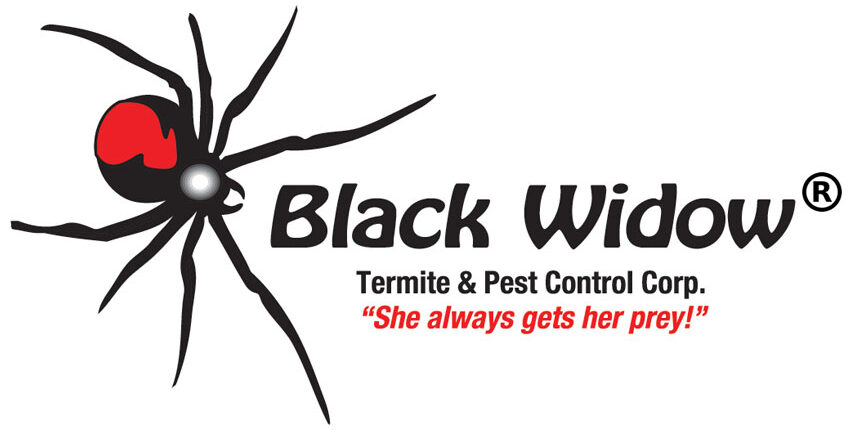Cockroach Control: German, brown-banded, Oriental and American
The German cockroach is the most problematic species in New York, although the oriental cockroach is common in buildings. American cockroaches are often referred to as “water bugs” or Palmetto bugs.
German Cockroaches: ¼ to ½” long. Brown-banded Cockroaches:¼ to ½” long. Oriental cockroaches: 1–1 ¼” long. American cockroaches: 1–1¾” long.




General Descriptions:
The German cockroach is pale brown with two stripes down the thorax. Both sexes have fully developed wings. Brown-banded cockroaches are yellowish brown with a darker brown band across the wings at the thorax. Females have reduced wings. American cockroaches are large, glossy, and reddish-brown with fully developed wings and antennae that are longer than their bodies. The body and small forewings of the Oriental cockroach are dark brown to black and glossy. Males have short wings that cover most of the abdomen; the females’ wings are tiny and functionless.
Damage:
All four species of cockroach are scavengers that feed on animal and plant material. These species can contaminate stored goods and products. The German cockroach is the major pest species of structures in the United States, often transported in packaging. Brown-banded cockroaches will hide in computers and electrical equipment, causing damage. American and Oriental roaches live in humid locations, emerging from sewers, infesting buildings and carrying a variety of human pathogens.
Want more information on the anatomy of a cockroach and identification? Click below:
Found a cockroach? Which one is it?
The best way to guarantee elimination of cockroaches from your location is to eradicate the source and get rid of any and all conditions conducive to their survival. Just like all animals, cockroaches need food, water and shelter to survive. If any of these resources are taken away, the roach, regardless of its type, will most likely leave and seek these resources elsewhere.
Roaches LOVE cardboard. To prevent roach infestations, eliminate all loose cardboard from your unit and transfer food such as cereals, pastas, etc. that generally come in cardboard packaging to alternative plastic containers for storage.
IPM recommendations for German, Brown-banded, Oriental & American Roaches
- Eliminate clutter and stacks of cardboard or paper bags, especially in warm, moist locations.
- Empty the garbage, compost, and recycling containers every evening. Wash trash cans often.
- Keep drawers, counters, appliances, floors, and walls scrupulously clean. Regularly clean underneath appliances and equipment. Check inside the equipment, too. Microwave ovens must be cleaned regularly.
- Store food in tightly sealed containers off the floor and away from walls, or keep it in the refrigerator.
- Empty refrigerator defroster pans weekly. Adding dish soap may also help keep pests away.
- Separate foods that aren’t used frequently from those that are. Store them in different places.
- Rotate stock of food and dry goods.
- Wash and dry dishes promptly. Wipe up spills immediately.
- Inspect items before bringing them into kitchen and other food areas.
- Do not keep recycled cans and bottles near the kitchen and food supply areas.
- Use vacuums with HEPA filters to clean up cockroaches, their body parts, and food. Seal the vacuum bag in a plastic bag before disposing of it.
- Repair water leaks. Seal gaps around pipes, tubs, drains, and sinks with a silicone sealant.
- Keep bathrooms as dry as possible.
- Seal gaps in cabinets and woodwork and openings around vents, registers, ducts, and electrical chases, and molding. Use silicone caulk.
- For Oriental cockroaches, address moisture issues, e.g., install a dehumidifier, improve ventilation, and/or seal entryways from moist area (like crawlspaces, sewers and so on)
- For German cockroaches, check drains, clean and get them on a regular program for cleaning.
Have you seen a cockroach in your apartment and still have questions or would like to learn more? Please click on the image or link below to be redirected to the NY State IPM Program’s website for more information on dealing with roach infestations.
 Found a cockroach? Don’t panic!
Found a cockroach? Don’t panic!
What can the customer do to prepare their unit prior to our technician’s visit for a roach service?
In order for our technicians to conduct a proper roach service, there are several things the tenant can do to prepare their unit for treatment.
BEFORE TREATMENT
- All cupboards, cabinets and drawers must be empty. Everything should be removed from cabinets, including pots, pans, appliances, utensils, and grocery items.
- Any clutter must be discarded. Cockroaches tend to use cardboard and paper bags for shelter and often deposit egg cases in these areas, too.
- All cardboard boxes(including cereal boxes, oatmeal boxes, sugar boxes, snack boxes, etc.) should be sealed in plastic zipped bags if these items are to be retained. This enables our technician to better investigate the situation and locate possible sources of infestation.
- Cracks and crevices should be vacuumed and sealed to prevent future cockroach infestation.
AFTER TREATMENT
As a part of our Integrated Pest Management Policy, liquid insecticide application, if deemed necessary, will be applied; otherwise gel baiting systems and monitoring traps will be used. Following sanitation, cockroach baiting is the most effective control tool.
- Gel baits do not require cleaning and washing surfaces after treatment. Insecticides are not applied over bait systems since this action renders the bait useless. Insect traps will be examined for continued infestation monitoring.
- If liquid insecticides have been applied rooms can be aired for 2 hours if windows have screens. Wait 24 hours and use gloves to wash dishes, silverware, pots, pans, etc, with water and detergent. After areas are dry, put your belongings back into cupboards, cabinets, and drawers.
After the initial service, Black Widow recommends signing up for monthly tenant service to ensure ongoing roach control. Black Widow also recommends daily vacuuming to eliminate existing pests and food products.
Click on the photo below to view our article “An IPM Disaster!” a good visual aid, offering tips on preventing roaches and other pests through IPM:

